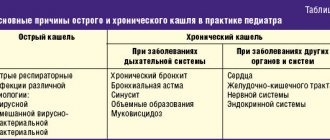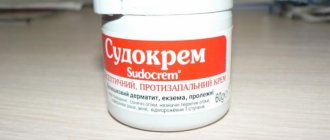Pimples in the groin in children
Rashes in children develop due to natural changes in the body and errors in care procedures. Pimples in the groin of a newborn may indicate pathological processes in the body. To cure a skin reaction, it is necessary to eliminate exposure to irritating factors and show the baby to a doctor.
Causes of violations
Acne in a child's groin occurs due to negative reactions in the body. The famous pediatrician E. O. Komarovsky names the main reasons for the appearance of rashes:
- diaper dermatitis;
- bacterial infection;
- fungal infection;
- allergy;
- psoriasis or eczema;
- diabetes;
- hormonal fluctuations;
- scabies;
- infectious diseases.
Factors influencing the development of pimples:
- prickly heat;
- overheating of the skin;
- stress;
- wearing underwear made of unnatural and low-quality fabrics;
- insufficient or excessive hygiene of the intimate area;
- teething;
- artificial feeding.
Diaper dermatitis
Poor quality diapers provoke the appearance of diaper dermatitis.
A negative skin reaction most often occurs in infants and children under 1 year of age as a result of the use of diapers. Main causes of rash:
- untimely replacement and prolonged skin contact with contaminated diapers;
- constant presence of the child in diapers;
- insufficient air supply to the baby’s skin;
- allergic reaction to the material and components of the hygiene product.
The disorder can be identified by the following symptoms:
- redness of the groin area;
- swelling;
- rash in the form of red spots and bumps;
- restless behavior of the baby;
- absence of elevated body temperature.
Heat rash (overheating)
Unformed sweat glands and increased sweating in infants lead to the appearance of rashes in the groin area. The main influences are exerted by the following factors:
- overdressing the child;
- an abundance of things made of synthetic materials that do not allow air and moisture to pass through well;
- increased blood circulation and metabolic processes in the baby’s body;
- insufficient or improper hygiene of the intimate area.
Manifestation of prickly heat:
- rash in the form of blisters, nodules or spots;
- redness of the skin;
- discomfort, itching;
- the appearance of crusts;
- the formation of weeping lesions when the rash merges.
Fungal infection
Hypothermia in an infant can affect the appearance of fungal infections.
A yeast infection in the groin in children develops under favorable conditions for the spread of the rash and deterioration of the baby’s health. The main causes of the pathology:
- taking antibacterial agents;
- insufficient immune protection;
- changes in hormonal levels;
- hypothermia;
- moist environment of the groin area.
The main signs of thrush:
- discharge from the genitals is white and thick in consistency;
- itching;
- redness and swelling of the skin;
- pain during urination.
Diseases of the body
A rash in the groin area in a child occurs against the background of pathological processes with the addition of additional symptoms. The main causes and manifestations of violations are presented in the table:
| Disease | Causes | Symptoms |
| Allergy | Contact with household chemicals and cosmetic products | Redness, peeling, itchy skin |
| Introduction of complementary foods | Swelling | |
| Individual food intolerance | Small rash that merges into red spots | |
| Reaction to clothing materials | Crust formation | |
| Scabies | Contact with scabies mites through a sick person | Skin rashes |
| Itching that increases in the evening and at night | ||
| Sleep disorders | ||
| Using personal belongings of an infected person | Moodiness | |
| Loss of appetite | ||
| Temperature increase | ||
| Psoriasis | Insufficient hygiene | Pink-red rash |
| Heavy sweating | Plaque formation | |
| Poor air access to the groin area | Acne pain | |
| Increased humidity in intimate areas | Swelling of the skin | |
| Eczema | Heredity | Pink blisters |
| Exposure to irritants | Itching | |
| Stress | Peeling and dry skin | |
| Diabetes | Heredity | Itching, burning skin |
| Red or blue rashes | ||
| Viral diseases | Thirst | |
| Frequent urination | ||
| Reaction to drugs | Increased appetite | |
| Change in body weight | ||
| Infectious diseases | Disease transmission from a carrier | Abundant rash with induration and purulent contents |
| Dry skin | ||
| Complications of the inflammatory process on the skin | Digestive disorders | |
| Increased body temperature | ||
| Enlarged lymph nodes |
Other reasons
The formation of a rash in childhood is influenced by:
- hormonal changes after birth;
- stressful situations with weakened immunity;
- the appearance of warts;
- skin friction;
- digestive disorders.
Treatment of pathology
Methods of treating pimples in the groin in children depend on the causes, prevalence and nature of the rash.
Basic treatment:
- hygiene procedures;
- dietary nutrition;
- eliminating irritants;
- change in skincare products;
- use of medicines.
Essential medications:
- Antihistamines - eliminate allergies.
- Anti-inflammatory - relieve redness and inflammation.
- Antiseptics - disinfect the skin.
- Antifungals - destroy fungi.
- Antibiotics - eliminate infectious agents.
Folk remedies are used to eliminate inflammation, discomfort and itching, disinfect and regenerate the skin, and restore local immunity. Bathing and washing are carried out with decoctions of chamomile, sage, oak bark, St. John's wort, yarrow, string, bay leaves, and linden flowers.
Source: https://StopRodinkam.ru/pr/telo/pryshhiki-v-paxu-u-rebenka.html
Red pimples in the groin of a child || Red pimples in the groin of a child
Most often, infants suffer from irritation in the groin. The cause of the disease is insufficiently careful care of the baby. The rash appears when the skin of the intimate area comes into contact with urine or feces for a long time. Clothes that are too warm cause sweating, and sweat also irritates the skin.
Another reason for this kind of ailment in a child is an incorrectly selected diaper. If the material of underwear rubs or the clothes are tight, irritation occurs on the skin. In the intimate area, the skin is especially delicate.
When the skin in the intimate area becomes inflamed, the genitals begin to itch and hurt. The child is capricious and does not sleep well, so parents need to urgently take action. One of the common reasons for the activation of the fungus is an allergic reaction of the body to food or medicine. In this case, you need to visit an allergist.
The causes of rash and itching in the groin in children are associated with the following pathologies:
- fungal infection of the skin;
- bacterial skin disease;
- dermatitis;
- eczema;
- the presence of pubic lice;
- scabies;
- infectious diseases of the genitourinary system;
- diabetes and other hormonal problems;
- pathologies of the liver and bile ducts.
Itching of the genitals can also be associated with stressful situations. Irritation and subsequent fungus can occur if you wash too often with aromatic detergents. Children should be washed with or without baby soap if their skin is too sensitive.
Infants often develop a rash on the neck. It is associated with poor adaptability of the body to changes in temperature, with overheating due to too warm clothes. Pimples appear around the mouth due to excessive drooling. The different types of rash with explanations can be found in the photo below.
We suggest you read: ICD 10 liver tumor
When the baby's genitals turn red, you need to go to the clinic. Methods for treating a rash in the intimate area depend on the cause that caused it. At the same time, it is necessary to reconsider the requirements for the cleanliness of underwear and the quality of diapers. The duration of therapy is about 10 days:
- For itching in the groin area, antiseptic preparations for external use are used: Gistan, Nezulin, Boromenthol, Fenistil gel. In advanced cases, hormonal ointments are prescribed (see also: hormonal ointments for dermatitis in children).
- If the rash and redness are of a fungal nature, ointments are used for external use: Nystatin, Sertaconazole, Miconazole, etc. They are applied to the labia of girls and the testicles of boys twice a day after hygienic treatment.
- For inguinal thrush, wipe the intimate area with antiseptic solutions - water and soda, hydrogen peroxide. Solutions of Miramistin and Furacilin are suitable. Your doctor may prescribe immunomodulatory drugs.
- If the disease is caused by an allergic reaction, it is necessary to identify the source of the allergy and exclude its use. This could be a food product or a medicine. For a complete cure, the doctor will prescribe antihistamines - Fenistil, Claritin, Zodak, etc.
If the disease is infectious, treatment is prescribed by a pediatrician or infectious disease specialist. Complex treatment includes adjusting the menu and diet, taking vitamin supplements and probiotics prescribed by the doctor.
Folk remedies for rashes involve relieving the symptoms of the disease, rather than treating it. They are used in combination with basic methods of therapy. For hygiene of the labia in girls, decoctions and infusions of herbs such as chamomile, sage, yarrow, oak bark, and St. John's wort are used.
Types of rashes in the intimate area
Depending on the cause that caused skin irritation in the intimate area, rashes are divided into types. A rash color specialist will make a preliminary diagnosis and refer the patient for further examination.
We suggest you read: Ointment for urticaria for children and adults
Of red color
A red rash on the baby's genitals suggests dermatitis. In infants, the so-called diaper type is observed. Infants may also suffer from heat rash. Red areas of skin with pimples are often a sign of an allergic reaction in the body. These pathologies differ from each other in the following symptoms:
- If dermatitis is caused by a rare change of wet diapers, the areas of localization of redness and pimples take the form of spots. In this case, pimples are sometimes filled with liquid. When they burst, crusts form. The baby is in pain and unpleasant, he is capricious and cries. In place of former pimples, wounds form into which infection can penetrate.
Diaper dermatitis
- Allergies most often make themselves felt on the butt. Pimples and redness appear on both halves of the butt. The reddened areas soon begin to peel off. When scratching, cracks and wounds form, creating a risk of infection.
- When prickly heat occurs, pimples do not form separate red areas - they are scattered throughout the intimate area. The skin between them is not affected.
Miliaria all over the body, including the intimate area
Source: https://one-zdorov.ru/krasnye-pryshchi-pakhu-rebenka/
Rash in the groin of a child: symptoms, treatment, prevention
A child's skin is very sensitive and needs careful hygiene.
However, a child develops a rash in the groin even with excellent care. Often there are areas of redness and inflammation in the area of contact of the body with the diaper - prickly heat, diaper dermatitis (diaper rash).
Some children are more prone to skin irritation and the spread of rashes and bacterial infections. Such babies require especially careful hygienic care.
Prickly heat
Thermoregulation in young children is not fully developed; the channels of the sweat glands cannot cope with their work. Increased blood circulation leads to the appearance of a rash in the child's groin area, where conditions are more humid and heat transfer is more difficult.
It is easier for children to tolerate cold than heat, but many parents forget about this and bundle up their kids. It is necessary to avoid overheating the baby’s body, treat the scattered red spots, nodules and blisters that appear, and improve sanitary and hygienic conditions.
A rash in a child’s groin is washed twice a day with infusion of chamomile, string or sage. Herbs that have antiseptic and anti-inflammatory effects are suitable.
In addition to herbal remedies, a weak solution of potassium permanganate (potassium permanganate) is used to cleanse the groin area. Do not use lotions containing alcohol, they dry out the skin.
Oily creams and ointments clog pores, which can cause bacterial growth and inflammation. The same negative result after using talc or powder.
Causes of rashes in intimate places
The rash is classified according to different types and causes of appearance. The disease that provokes it can develop rapidly or gradually. The main causes of a groin rash in a newborn and infant are the following.
Fungal infection
Infants have especially delicate skin in the groin area; this place is warm and moist, so the slightest irritation can become an ideal environment for the proliferation of pathogenic fungi that provoke inflammation.
Because of them, the baby begins to experience itching and pain, which is accompanied by crying and poor sleep.
Examples of such an infection include inguinal dermatophytosis, which is caused by the fungus Trichophyton rubrum, as well as candidiasis, caused by the active reproduction of the yeast Candida.
Advanced case of groin fungus
Signs of scabies
Scabies is a contagious disease that is transmitted through direct contact with a carrier. It is caused by tick-borne parasites. They appear to be paired small dots located at a distance of several millimeters from each other. The lesion begins in the extremities, often affecting the groin area. The rash is very itchy (especially at night), and the child begins to itch.
Poor hygiene
If a baby's diaper, which is full or soiled with feces, is not changed for a long time, redness appears in its delicate places (namely the groin area). When a baby is wrapped too warmly, he sweats, then, in addition to intimate areas, the rash can affect the armpits and neck, since sweat is a strong irritant to the dermal layer.
Rashes and itching in a child’s groin area sometimes appear when the diaper size is incorrectly selected (too tight or too loose and leaks) or an allergic reaction to its material.
Rash from ill-fitting diaper
Important! You shouldn’t overdo it with hygiene either - if you wash your baby too often with detergents or toilet soap, redness and irritation can appear, and even a fungal infection can begin.
Children's heat rash
In the summer months, the main problem for delicate baby skin is prickly heat. It is a pinkish rash in the form of blisters. It is usually localized in the folds of the neck, legs, as well as the groin and armpits. This skin disease occurs due to inhibition of sweat evaporation, as the sweat glands become clogged.
The causes of the disease are:
- overheating of both the skin and the whole body (wrapping the baby);
- insufficient cleansing of the dermis;
- use of creams that are too rich in skin care;
- infection or fever in an infant.
A rash in a child’s groin from baby heat is not dangerous in itself, but it can be the cause of the toddler’s nervousness and poor sleep and appetite.
Note! It is easy to confuse a harmless sweat rash with a serious illness, such as measles or scarlet fever, so at the slightest suspicion, you should show the child to a pediatrician.
Diaper dermatitis (diaper rash)
Excessive moisture in the diaper area often leads to redness of the baby's genitals, buttocks and inner thighs. Affected areas may be dry and raised, or flat and glossy.
Rash between baby's legs is more common in children older than four months.
After using a certain brand of wet wipes, diapers, or introducing complementary foods, red spots and a scattering of pimples may appear in the intimate area.
Infants who are prone to allergic reactions are more susceptible to diaper dermatitis.
Irritation and inflammation of the skin under the diaper are associated with the type of stool the baby has and a fungal or bacterial infection. A rash in the groin area of a child often appears when baby teeth erupt. At 6–9 months, saliva becomes more acidic and enters the stomach and makes stool more irritating. Formula-fed children are more susceptible to rashes in the groin area.
Source: https://BeautyDayRnd.ru/simptomy/pryshchiki-v-pahu-u-rebenka.html
Rash in the groin of a child: prickly heat, candidiasis, causes, treatment, photo
A child's skin is very sensitive and needs careful hygiene.
However, a child develops a rash in the groin even with excellent care. Often there are areas of redness and inflammation in the area of contact of the body with the diaper - prickly heat, diaper dermatitis (diaper rash).
Some children are more prone to skin irritation and the spread of rashes and bacterial infections. Such babies require especially careful hygienic care.
Why and how does it develop?
The water-lipid balance of the skin of children in the first year of life is imperfect, and therefore it can be disrupted at any time. It is excess moisture on the skin that is considered the main cause of diaper rash.
Prolonged contact of the baby's skin with urine and feces is the most common prerequisite for the inflammatory process. The inflammation itself occurs in this case due to the effect on the epidermis of urea, ammonia and salts contained in the urine.
In feces, the main danger is represented by two enzymes - lipase and protease. If for some reason the baby has loose stools or diarrhea, everything becomes even worse - such feces are dangerous for the skin not only because of their enzymatic component, but also because of the presence of an acidic environment.
With diarrhea, even brief contact of the skin with feces causes severe irritation in newborns and infants.
Salts that are dangerous to the skin are also found in sweat. Sweat glands in children work very actively; this is a feature of the first year of life.
If parents are unfamiliar with it, they may mistakenly try with all their might to better heat the nursery, install a couple of heaters, and dress the child warmer.
The work of the sweat glands becomes excessive as the child’s body tries to get rid of excess heat and release it outside. The salt environment of sweat affects the skin in much the same way as urine.
A real revelation for parents is the situation when the air temperature in the room is normal, and the child is not wrapped up, and diapers are changed frequently, but diaper rash still appears.
In this case, the issue is most likely due to mechanical friction - a diaper in the groin area, a vest under the arms, or a diaper on the baby’s neck can rub.
Deep folds of skin can also rub against each other - this is how localized inflammation occurs in the groin, under the knees, under the arms, between the legs and even between the fingers.
New complementary foods that have just been introduced into the baby’s menu can contribute to the development of diaper rash, and in this case the prerequisites will be allergic. A favorable background for the development of diaper rash is a period of illness - high temperature increases sweating, as well as periods of treatment, in particular with antibacterial drugs.
Doctors have long noticed that children who genetically have light skin and blond hair most often suffer from diaper rash. Dark-skinned babies are less likely to suffer from prickly heat, dermatological forms of allergies and diaper rash.
Particular attention to the prevention of diaper rash should be paid to parents of babies who are at risk for this pathology. Pediatricians include:
- overweight or obese children;
- children with allergies, especially those suffering from hereditary forms of allergies;
- babies with diagnosed intestinal dysbiosis;
- children currently suffering from gastroenteritis or intestinal infection;
- children with pathologies of the kidneys and urinary system;
- premature babies;
- babies who are not breastfed, but bottle-fed.
What is inguinal dermatitis
There are several types of dermatitis that can develop into different stages of the disease:
- popular education;
- reddened skin;
- red-scarlet spots;
- peeling.
It is divided into candidal formation, seborrheic form, dermatophytosis, psoriasis and erythrasma. Each type has its own specific characteristics and, accordingly, their treatment is carried out differently.
There are many reasons why this disease can occur:
- excessive secretion of sebaceous glands;
- allergies, with the main allergen being dirt, sweat, non-breathable underwear;
- fat deposits;
- hormonal drugs;
- infections.
Reasons for appearance
Excess moisture is the key cause of diaper rash in the groin area in children.
Other reasons why children's skin is susceptible to irritation include:
- underdevelopment of the hydrolipid mantle of the skin;
- excessive sweating;
- tendency to allergies;
- weak local immunity;
- looseness of the epidermis.
Inflammation of the skin folds of the groin is provoked by many external factors. Their exclusion prevents dermatological problems, pyoderma and sepsis in children.
Excreta
Foci of skin inflammation in the groin occur in areas of irritation from urine and feces. Baby feces contain many biochemicals:
- amines;
- skatole;
- ammonia;
- lipase;
- hydrogen sulfide;
- thiols, etc.
Waste products in prolonged contact with the groin cause irritation. Diaper rash often appears precisely when complementary foods from fruit purees and juices begin to be introduced. This is evidence that the child’s body cannot yet cope with the new food.
In 45-50% of cases of diaper rash in the groin of newborn boys, it is associated with improper use of diapers. They consist of synthetic materials that retain moisture.
With infrequent changes, urine stops being absorbed into the diapers. Because of this, the skin is constantly in contact with irritating substances.
Many pediatricians generally recommend abandoning disposable diapers in favor of cotton onesies and diapers.
We suggest you familiarize yourself with Watery pimples around a child’s mouth. A child has a rash around the mouth: causes and treatment
Redness and itching in the intimate area are one of the signs of improper care of children's skin. Tissue hyperemia in the groin is often associated with:
- using washcloths with a rough surface;
- careless washing of the child;
- insufficient drying of the skin.
After water procedures, you need to wait until the skin folds dry completely. It is also necessary to use hygroscopic powders that prevent diaper rash.
Friction
Possible causes of irritation also include prolonged skin contact with:
- tight clothes;
- diapers;
- snakes and seams on clothes.
Constant friction leads to irritation of the soft tissues in the groin, swelling and inflammation. If diaper rash is not treated promptly, bacterial infections often occur.
Source: https://MedLazaret.ru/krasnuha/allergiya-v-pahu-u-rebenka.html
Prevention
Skin rashes can be prevented. There are a number of preventive measures for this.
- Maintaining hygiene and teaching children to take proper care of themselves.
- Proper nutrition for the baby and nursing mother.
- Maintaining immunity.
- Timely consultation with a doctor and taking therapeutic measures.
Do not think that suddenly appearing rashes will go away on their own. The longer the skin continues to be irritated, the greater the likelihood of developing an infection of tissues and organs, even if the cause is not candidiasis.
Why does groin rash occur in newborns?
The skin of babies under one year old, especially newborns, is very delicate and can react to any irritation. We’ll discuss what causes groin rash in babies and how to deal with it on the mother’s website supermams.ru.
Rash in the groin area in a child: causes
It must be said that the skin in the groin area is very delicate not only in babies, but also in adults. Therefore, she often reacts to all sorts of irritants with different types of rash.
The most common causes of pimples and redness in the groin:
- Overheating or heat rash. This happens because the baby is in diapers for too long. Lack of proper hygiene reinforces the negative reaction. Miliaria can be identified by local redness of the skin and the presence of small blisters.
- Diaper dermatitis. Most often, this condition follows from the previous one, when the skin comes into contact with a diaper overflowing with urine or feces for too long. This environment is favorable for the development of bacteria or other microorganisms, which cause dermatitis. The baby's skin is bright scarlet, and in addition to blisters (papules), there may also be pustules, wounds, and ulcers.
- Contact dermatitis or allergic reaction. A rash in the baby’s groin area and specifically around the anus is definitely an allergy to some food product. What is the connection between nutrition and the groin area? The most direct: during defecation, delicate skin comes into contact with an allergen, which is why there is such a red ring around the butt. In addition, contact dermatitis is also possible - its subtype is diaper dermatitis. A reaction can occur to cosmetics, soap, etc. In addition to redness of the affected areas of the skin, local swelling is observed.
- Candidiasis. A little person can experience all the “delights” of thrush. The fungi that cause it thrive in the moist, warm conditions created by the diaper. They again provoke a rash in the child’s groin, and the hallmark of candidiasis is whitish plaques. In addition, thrush is not limited only to redness between the legs of a child; most often, its signs are also present in the mouth, in the form of a coating of white films on the cheeks, palate and tongue.
We at supermams.ru have tried to clearly distinguish between the types of groin rash in babies. Accordingly, the elimination of different causes is carried out in different ways. Let's look at which ones next.
Rash in a newborn's groin: how to fight?
The first and universal advice for all types of groin rash is for the baby to take air baths or, simply, to ventilate the butt. The more often the child “holops”, the sooner any rash will go away, since it will dry out in the air, and ulcers and wounds will heal.
Of course, for this you need to provide comfortable conditions, namely the required air temperature so that the child does not freeze. The optimal temperature for ventilation will be 23-25°C.
Next, we look at the nature of the rash - what it is like. Above we described which rashes are provoked by what. According to the manifestations, we choose the tactics of further actions:
- If the rash in the baby's groin is small, with blisters (due to prickly heat), in addition to airing, you can use mild products that will help soothe the skin. These include ointments and creams - Dexpanthenol (Bepanten), Dexamethasone, Drapalen, etc., but they should only be applied to dry, clean skin! In addition, the baby can be bathed in decoctions of medicinal herbs - chamomile, calendula, string, etc. Such baths will soothe your baby’s skin and dry out the bubbles.
- If the skin “burns” bright red (with diaper dermatitis), you should temporarily stop using disposable diapers, keep your baby’s bottom dry and change the diaper as often as possible.
- If you have contact dermatitis, avoid using wet wipes or other cosmetics that may cause a reaction. If you have recently introduced some new foods to your diet, perhaps the red rash in the groin area is nothing more than a reaction to them.
- If a child has candidiasis, then it is necessary to fight it with antifungal agents. For a baby, rubbing with borax in glycerin, as well as with a weak soda solution, is best.
A few more tips for caring for your baby's delicate skin
Avoid powder, especially those that are expensive and smell nice. If it is impossible to refuse it, choose the one that is sold in pharmacies, a cheap one.
Do not overheat the child, do not try to wrap him up more tightly, this often leads to the appearance of a rash not only in the groin area, but also in the folds of the arms and legs. Dress your child comfortably.
If your baby is breastfed, watch your diet; the rash on the butt may appear as a reaction to something the mother ate.
If the groin rash does not go away for a long time, and you have been treating your baby for it for more than 10 days, most likely you will not be able to cope with this trouble on your own. Therefore, feel free to consult a pediatric dermatologist.
(8 3,63 of 5) Loading...
Source: https://supermams.ru/paxovaya-syp.htm
Treatment of diaper rash in children
You probably already understood the basic principle of treatment when you read my story at the very beginning of the article. But situations may be different, so let's take a closer look at all the points.
Very often, the cause of diaper rash can be diarrhea. Children often experience tummy upsets when they are teething. Keep this in mind, perhaps the secret is diarrhea on the teeth, and as a result - irritation.
I described all the reasons in some detail in the article, so try to think and find what exactly happened to you.
What causes redness and pimples in the groin area in children
If a baby develops rashes on his skin, it means that there are pathological processes going on in his body that need to be detected and stopped as quickly as possible. The rash can be localized in different parts of the child’s body. For example, rashes in the groin of a newborn appear quite often and cause great trouble for the baby.
Rash is a common problem in babies
Associated symptoms
Almost always, a rash in a child’s groin area is accompanied by unpleasant and even painful symptoms: fever, tearfulness, and lack of appetite. The biggest discomfort for a baby is itching.
Itching in boys
Rash on a child’s knees - causes of rashes
In a boy, redness and rashes often affect the groin and scrotum area. After washing, the itching subsides a little, gaining strength at night (which prevents the baby from getting enough sleep). The surface of the rash peels off.
In this case, the skin of the penis is not affected by itching, but the perineum and intergluteal fold can be very itchy. Often this dermatological problem affects obese children due to the large area of skin folds in the groin area.
For your information. In terms of hygiene care, male and female babies are slightly different. Boys can be washed in different directions, girls - strictly from the groin to the anus.
Itching in girls
In girls, pimples appear in the labia area, subsequent itching and scratching can lead to ulcer-like wounds on the delicate skin of this area; bacteria entering them will provoke synechiae (in this case, the perineum can become very red and itchy).
Itching can also be observed in inflammatory diseases: vulvovaginitis (it often occurs from frequent acute respiratory infections, inflammation of the urinary tract, tonsillitis, leading to a general decrease in immunity) and vulvitis.
Additional Information. Other accompanying symptoms may include white, yellow or greenish discharge from the genital canals, as well as frequent and painful urination.
Rash in the groin in girls is often accompanied by itching
Sometimes itching in the groin area in girls can occur due to dry skin due to too frequent washing or an allergic reaction to the detergent. It is best to wash the babies with running water and gently pat dry with soft gauze.
Diagnosing the problem
A child has a rash on his hands - what is it, the causes of the rash
In themselves, the rash and red spots that appear in the child’s groin are not a disease, but only signal the presence of a problem in the baby’s body, which must be identified as soon as possible in order to begin adequate treatment.
Initially, a thorough examination of the child by a pediatrician is carried out, after which laboratory tests and studies are prescribed, as well as consultations with other specialists: an allergist, a pediatric urologist or gynecologist, an endocrinologist, a dermatologist, and an infectious disease specialist.
To confirm the diagnosis, the following tests may be prescribed:
- general clinical blood test;
- general urine analysis;
- skin allergy tests;
- scrapings from mucous membranes.
How to deal with discomfort
Small red rash on a child’s tongue - causes of appearance
When a rash between a child’s legs really bothers the baby, it is necessary to relieve him of these unpleasant sensations as soon as possible. In such cases, medications and traditional recipes help. Bepanten cream (based on dexpanthenol and lanolin) relieves redness and itching well.
Effectively prevents and fights rashes at the initial stage by using products that cover the delicate skin with a protective film (vaseline, zinc ointment, “talker”). In severe cases, the doctor will prescribe corticosteroid creams, antibiotics, or antifungal ointments. For example, Fenistil gel based on the active substance dimethindene maleate perfectly relieves itching.
Gel "Fenistil" is used to relieve discomfort from rashes in the groin
Among the folk remedies, parents and pediatricians recommend generously lubricating the damaged area:
- sea buckthorn oil;
- cooled infusion of young carrot tops in boiling water (it can also be taken internally);
- infusion of bay leaf.
Baths in a decoction of wormwood leaves are also recommended.
Preventing rashes in children
In order to avoid having to subsequently treat your baby’s skin rashes, it is better and easier to prevent them.
Thus, it is possible to prevent diaper dermatitis if you change full or soiled diapers on time, bathe the child completely at least 3-4 times a week, use special creams for diapers, and carefully select the diaper itself. It is better to treat the skin of a toddler with light lotions and oils that do not contain parabens, dyes and fragrances.
You should maintain the optimal temperature and humidity level in the child’s room, avoid over-wrapping and, as a result, increased sweating. Frequent general cleaning and periodic regular ventilation of the room are necessary.
In case of allergic reactions in a baby, the mother needs to reconsider her menu, if the child is already eating “adult” food, identify and exclude allergenic foods.
If the allergy is contact, take a responsible approach to the choice of materials for the baby’s clothes, his diapers, and avoid contact with animals, as well as chemicals (for example, washing powders that are used to wash children’s underwear).
Infectious diseases that cause rashes in the groin and other areas are effectively prevented by vaccinations, which must be done in accordance with the national calendar. Helps prevent rashes and strengthen the baby's immunity.
A rash is a fairly common complaint in newborns; sometimes it appears in the child’s groin. The causes of rashes and methods of their treatment are different; they are selected by a pediatrician based on examination and tests. Sometimes it’s easy to defeat them with better hygiene measures, but sometimes serious treatment is required.
Source: https://kpoxa.info/zdorovie-pitanie/syp-paxu-rebenka-prichiny.html
Treatment of the disease
You can cure diaper rash in the groin with medicines and folk remedies
Diaper rash in newborns in the groin is treated taking into account the reasons for its occurrence. Before treating diaper rash in newborns, you need to consult a doctor who will determine the type of irritation. It is important to determine not only the severity of the clinical case, but also the presence of complications, such as the addition of infectious microflora. Treatment of diaper rash necessarily includes eliminating the cause of its occurrence.
It is possible to cure diaper rash in the groin only with an integrated approach. Medicines and traditional recipes are used in therapy. To remove irritation, local spectrum drugs are used - ointments, creams. It is recommended to treat diaper rash in newborns with the following medications:
- Baneocin;
- Bepanten;
- Desitin ointment;
- Clotrimazole;
- Panthenol;
- Sanosan cream.
These drugs can also be used to treat diaper rash in women and men. Apply the cream to damaged skin up to 3-4 times a day. Before applying the ointment, you need to bathe the child. After the diaper rash cream has been applied, the product should be allowed to dry naturally. In infants, not only the affected area is smeared, but also a little of its healthy part around the redness.
You can fight diaper rash in the early stages with the help of powder. The powder makes the baby's skin dry and prevents irritation when the skin rubs against clothes or diapers. The powder can be very simple, or with the addition of medicinal herbs, the presence of which will enhance the therapeutic effect of the product.
“Talc is one of the best remedies for diaper rash when the irritation is moderate. Use powder only on clean, dry skin after swimming. It is strictly forbidden to use starch instead of powder. The substance does not provide any therapeutic effect, and, as it rolls off, it can provoke even greater irritation.”
How to get rid of diaper rash in a child if there is an infection - use ointments with an antibacterial spectrum of action. These medications include Baneocin, nystatin ointment, and syntomycin ointment. In severe clinical cases, a remedy for diaper rash in the groin, Tanin, is used. Soak a cotton pad in the solution and apply the lotion to the irritation.
You can treat diaper rash in a child using folk recipes. To eliminate irritation, oils based on medicinal herbs are used, baths are organized and powders are prepared.
Baths for diaper rash
Baths are very useful for treating diaper rash in the groin of a child.
Taking a bath is especially helpful for treating redness in the groin. Decoctions based on medicinal herbs are added to the water. Diaper rash baths soothe irritated skin, relieve inflammation and redness, and eliminate painful symptoms. After taking the baths, the child feels much better, sleeps well, and healing proceeds much faster.
For severe rashes, treatment with folk remedies in the form of baths is carried out using dry mixtures:
- chamomile;
- oak bark;
- wormwood;
- sage;
- millennium;
- birch buds;
- calendula.
For baths, one herb is used, or an herbal mixture is made by mixing several ingredients in equal proportions. Recipe: Pour a tablespoon of the ingredient into a glass of boiling water. Leave for an hour, strain. Pour the resulting liquid into the baby's bathing water. There is no need to wash with clean water afterwards. Herbal decoctions are recommended for frequent washing of the child.
A bath of potassium permanganate shows good results in the treatment of groin diaper rash. Several crystals of the drug are added to warm water. The child should stay in the bath for up to half an hour. After the procedure, medicinal ointment or powder is applied to the groin skin.
Powders
How to treat diaper rash in a child’s groin other than baths: you can make your own powder. All ingredients for preparing the medicine can be purchased at the pharmacy. For the powder you will need:
- talc 50 g;
- corn starch 20 g;
- zinc oxide 7 g;
- allantoin 2 g.
Mix the ingredients together, add 2-3 drops of lavender oil. Other oils can be used. Before treating a baby's diaper rash, the groin must be washed and the skin dried.
Baby body oils
Body oils should be applied after water procedures
Vegetable oil is used in the treatment of irritated groin skin. The ingredient is heated in a water bath. The oil temperature should not be higher than body temperature. The product is applied after water procedures. It is forbidden to use this method if there is severe diaper rash in the groin.
Folk remedies
In the treatment of diaper rash in the groin, ointments prepared independently are used. Ingredients for ointment:
- honey 300 g;
- fish oil 15 g;
- chloroform 1 g.
Mix the ingredients together. Apply to the skin in the groin, leave for 10 - 15 minutes, rinse with water.
Vaseline-based ointment: mix a tablespoon of Vaseline with a pinch of dried and crushed calendula flowers. Apply ointment daily after bathing.
Add two crushed Nystatin tablets to the zinc ointment, add a couple of drops of vitamin A.
Mix sour cream and propolis in equal parts. Apply the product to clean groin skin after bathing.










